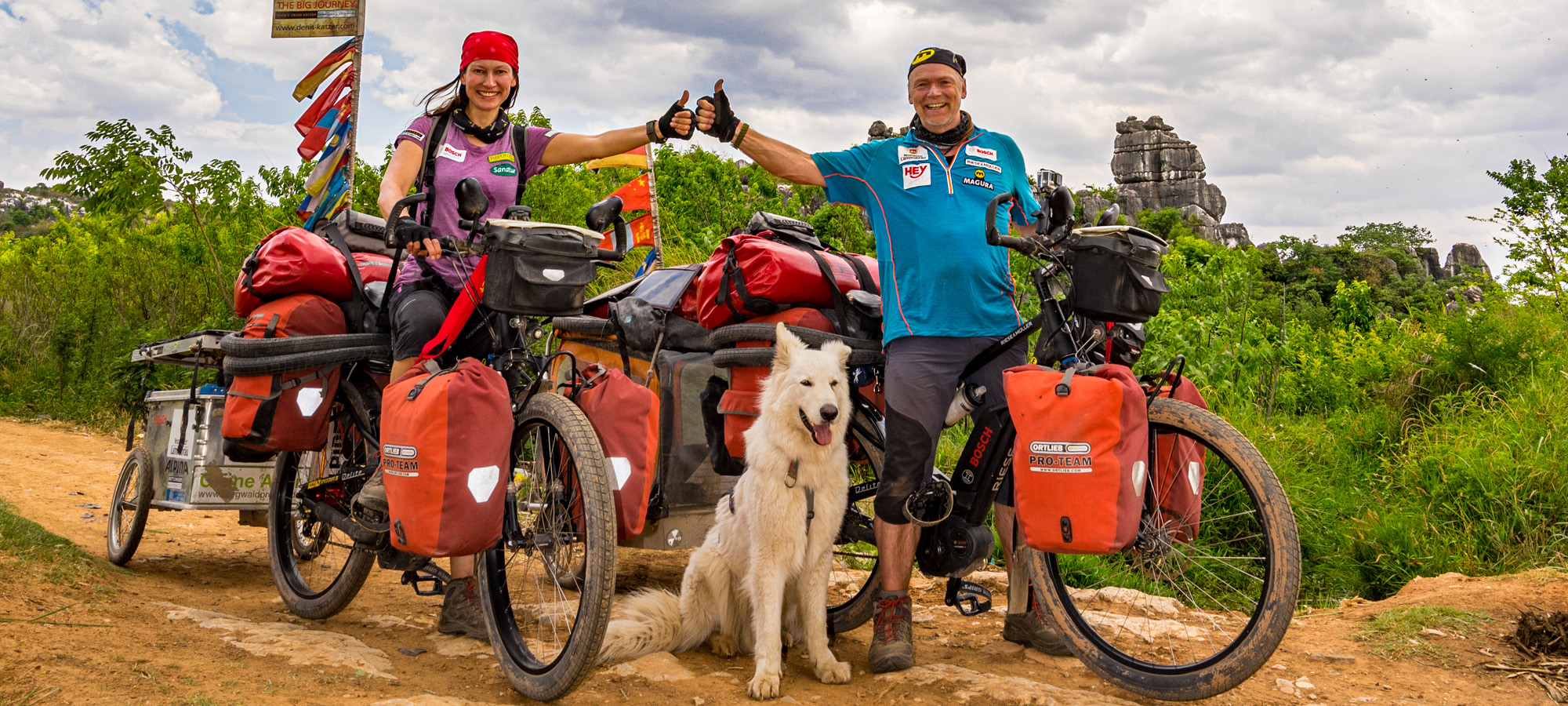
Transnistria
N 46°43'59.9'' E 029°27'37.1''Immediately after breakfast we drive to Transnistria. Although we had turned our backs on this republic, we are allowed to pay it a short visit today. Father Andrew wants to show us the mother monastery which is only a few kilometers over the border. A monastery where he had worked as a teacher before he founded Marta si Maria. Father Andrew wears his priestly robes. The border guards have respect for that,” he explains with a kind smile. Although we are accompanied by father Andrew and sister Domnina, I don’t feel well. When we stop at the barrier, however, I can’t recognize any of the officers. Sure, they also work in shifts here. We cross the border without the slightest difficulty and speed off in the VW bus towards the New Neamts monastery near the village of Kitzcany. We are welcomed there by a monk-priest called Zotic, who explains the entire complex to us. Domnina has to translate diligently. We learn that the high priest and bishop of Edinet and Breni named Dorimendont Cecan, a friend of Father Andrew, died in a mysterious traffic accident just six months ago. “It was a big shock for us. We cried for days. He was the kindest and friendliest person we ever met,” we hear. We later learn that the bishop had many friends. Only the government in Moscow, Transnistria and Moldova made life difficult for him. He constantly had to solve problems. Mostly of a political nature. He was a strong man. Never bent over. And always stood up for people’s rights. He was against corruption, had many personal meetings with the president and was very uncomfortable for the governments. In my research, I even find out that the newspapers blamed senior members of the government for his death. I read that even church leaders have been infiltrated and corrupted by the government. A network of entanglements around power and money, which unfortunately has also affected the church again and again for 2000 years. Now that the bishop is dead and they have one less strong enemy, 270 of the 300 monks who lived here a short time ago have left the monastery. “Even monks need safety and security. The bishop has given them that,” we are told.
In fact, the large complex with its many impressive churches already makes a run-down impression. The monk shows us the museum with its precious icons and centuries-old books, the most valuable of which were stolen during the communist era. When we visit the tomb where the holy men are buried, many of the tombs are empty. “They were looted during the Communist era. There used to be a hospital here. The monastery was closed at the time. Our bishop rebuilt it,” the priest explains. Then he opens a coat lying in one of the chambers. A skull with its complete skeleton is revealed. “Who was that?” we ask. “When we were renovating the monastery, we found it under the sidewalk. It was not unusual for holy monks to wish to be buried in an inconspicuous place without a gravestone or tomb. As he lay in one of the places where usually only such monks find their final resting place, we assume that he was a very influential and holy monk-priest. His bones are currently being scientifically examined.” “How can you tell when a priest or monk is holy?” I ask. “Well, he must have led a flawless life during his lifetime. Perhaps he also performed verifiable miracles. Another reason for his canonization is whether miracles took place at his grave after his death. And the final motive may be that holy oil dripped from his skeleton. But it also happens that his bones smell good, which was often due to his meatless diet. We also have various verifiable cases of saints who do not decompose after their death, even though they were not mummified. Or that their bodies stay warm, for example.” “Stay warm how?” I ask in surprise. “Well, yes. You can measure 37 degrees body temperature.” “Even after they’ve died?” “Yes, even after they’ve died. There’s a saint in Kiev, for example. There are all sorts of inexplicable miracles. In any case, such clear identifications are for saints,” he explains.
Impressed, we leave the monastery and drive back to Moldova. Although Transnistria is said to have more money than Moldova, there is absolutely no sign of this. On the contrary, the mood here is more sombre. Without exception, the buildings are just as run-down as on the other side of the border. All signs and lettering are in Cyrillic. Transnistria has its own currency. A kind of ruble that is not recognized by any country in the world. An armed soldier stands at a barrier in front of the border. The barrier goes up and we are allowed to drive on. The roads also look as if they have been plowed. Almost all of Moldova’s former industry is located here in Transnistria. It’s a shame that people can’t even stick together in such a small country. This separation undoubtedly costs a lot of money. Money for an extra border, for extra border guards, for soldiers, the currency, a different label, a different school system, extra police and paid politicians etc. We are surprised and once again happy to turn our backs on this republic.

